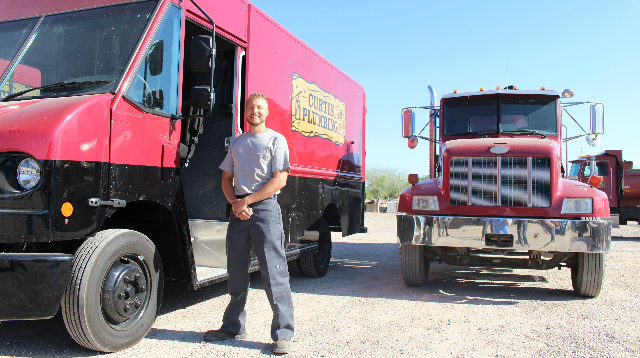How Your Septic System Works: A Step-by-Step Guide
Many Tucson homeowners rely on septic systems to manage household wastewater, but few understand exactly how these systems work. Knowing the process can help you maintain your system, spot potential problems early, and make informed decisions about care and repairs.
Step 1: Wastewater Leaves Your Home
Every time you flush a toilet, run the sink, or take a shower, wastewater flows from your home’s plumbing into the septic tank. This water carries solid waste, grease, and other substances that need to be separated before safe disposal.
Step 2: Solids Settle in the Septic Tank
Inside the septic tank, gravity does much of the work. Heavy solids sink to the bottom to form sludge, while lighter materials like grease and oil float to the top as scum. The middle layer—partially clarified liquid—remains between the two and eventually exits the tank into the drain field.
Step 3: Bacteria Break Down Waste
Natural bacteria inside the septic tank break down some of the solids. This process reduces the volume of sludge and scum but does not eliminate them entirely, which is why regular pumping is essential.
Step 4: Effluent Flows to the Drain Field
The clarified wastewater, known as effluent, flows from the septic tank into a network of perforated pipes in the drain field. These pipes distribute the water evenly into the surrounding soil.
Step 5: Soil Filters and Purifies the Water
As the effluent soaks into the soil, natural filtration processes remove harmful bacteria, viruses, and nutrients. By the time the water reaches the groundwater supply, it is clean and safe.
Key Components of a Septic System
- Septic Tank – The main chamber where solids settle and bacteria begin breaking down waste.
- Inlet and Outlet Baffles – Prevent solids from entering the drain field and protect tank structure.
- Drain Field – A network of perforated pipes that disperse wastewater into the soil.
- Soil – Acts as a natural filter to purify the effluent before it enters the groundwater.
Why Understanding Your System Matters
When you know how your septic system works, you can take steps to maintain it properly. Avoid flushing harmful items, schedule regular inspections, and pump the tank every 3–5 years to prevent problems.
Tucson Septic Systems: Your Local Experts
At Tucson Septic Systems, we help homeowners maintain efficient and reliable septic systems. Our team offers inspections, pumping, repairs, and education to keep your system running smoothly year-round.
Contact us today to schedule an inspection and learn more about how we can help you protect your home and your investment.

